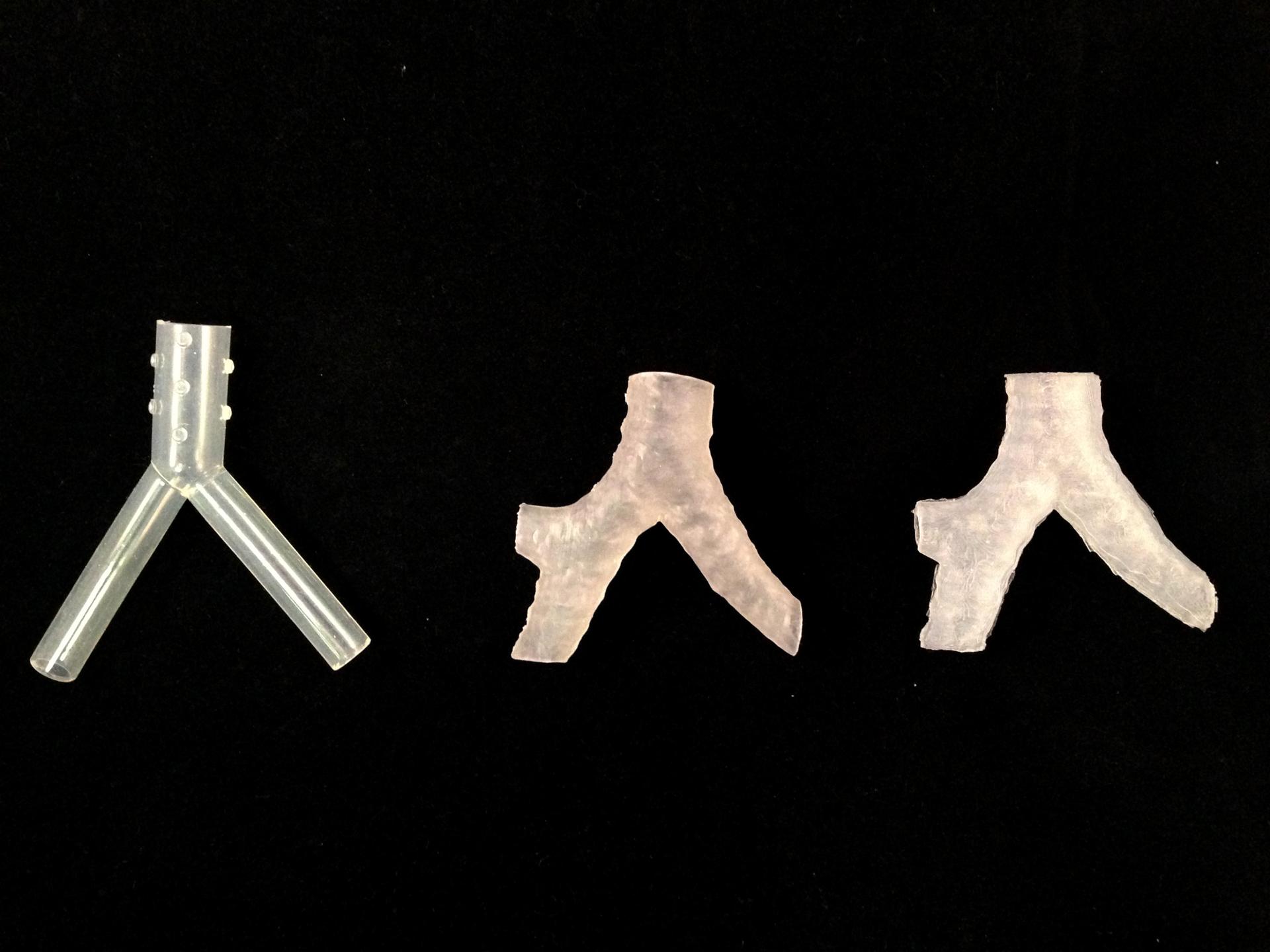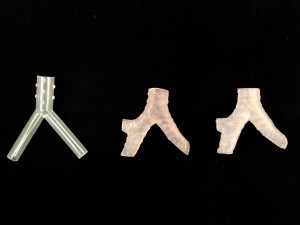Hospitals Develop Custom Medical Implants with 3D Printing

Latest News
December 22, 2014
Doctors and hospitals continue to come up with innovative new ways to use 3D printing to improve patient care. With 3D imaging, surgeons can now generate custom medical implants that can save lives.
 A traditional stent, placed next to two custom printed stents. Image: George Cheng, Beth Israel Deaconess
A traditional stent, placed next to two custom printed stents. Image: George Cheng, Beth Israel DeaconessAt Beth Israel Deaconess Medical Center, for example, researchers have developed a way to print breathing stents designed to fit specific patients’ tracheas. By 3D printing these airway stents, doctors can provide a better fit than would be possible with mass-produced stents.
Dr. George Cheng, a research fellow at Beth Israel, received a $50,000 grant from the Center for Integration of Medicine and Innovative Technology to fund the research.
Traditional stents may not fit snugly and can move around in the throat. The tubes in the stents can become blocked, or they can be hampered by new tissue that forms around them. Custom stents are possible currently, but they aren’t designed to exactly fit a particular patient and they can take months to obtain. Cheng thinks 3D printing could provide a patient-specific stent in a few days.
Because the silicon used to make the stents isn’t compatible with 3D printers, the team actually prints a mold that is used to form the silicon stent. The molds are based on a CT scan of the patient’s trachea.
A clinical trial is expected to begin next year.
In a similar application, surgeons at the University of Michigan’s C.S. Mott Children’s Hospital in Ann Arbor printed biodegradable plastic splints that were sewed around the bronchi of a child born whose airway had collapsed because he was born without a pulmonary valve. The bioresorbable device was created by Glenn Green, a University of Michigan associate professor of pediatric otolaryngology, and Scott Hollister, professor of biomedical engineering and mechanical engineering and associated professor of surgery. The same device was used to help another infant in 2013.
The team created a 3D model of the child’s airway to make the custom splints.
You can see a video about the procedure below.
Source: Boston Globe and C.S. Mott Children’s Hospital
Subscribe to our FREE magazine, FREE email newsletters or both!
Latest News
About the Author
Brian Albright is the editorial director of Digital Engineering. Contact him at [email protected].
Follow DE





